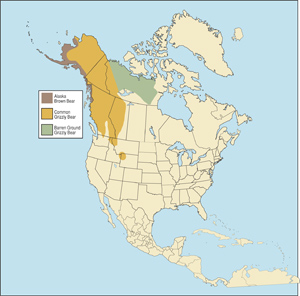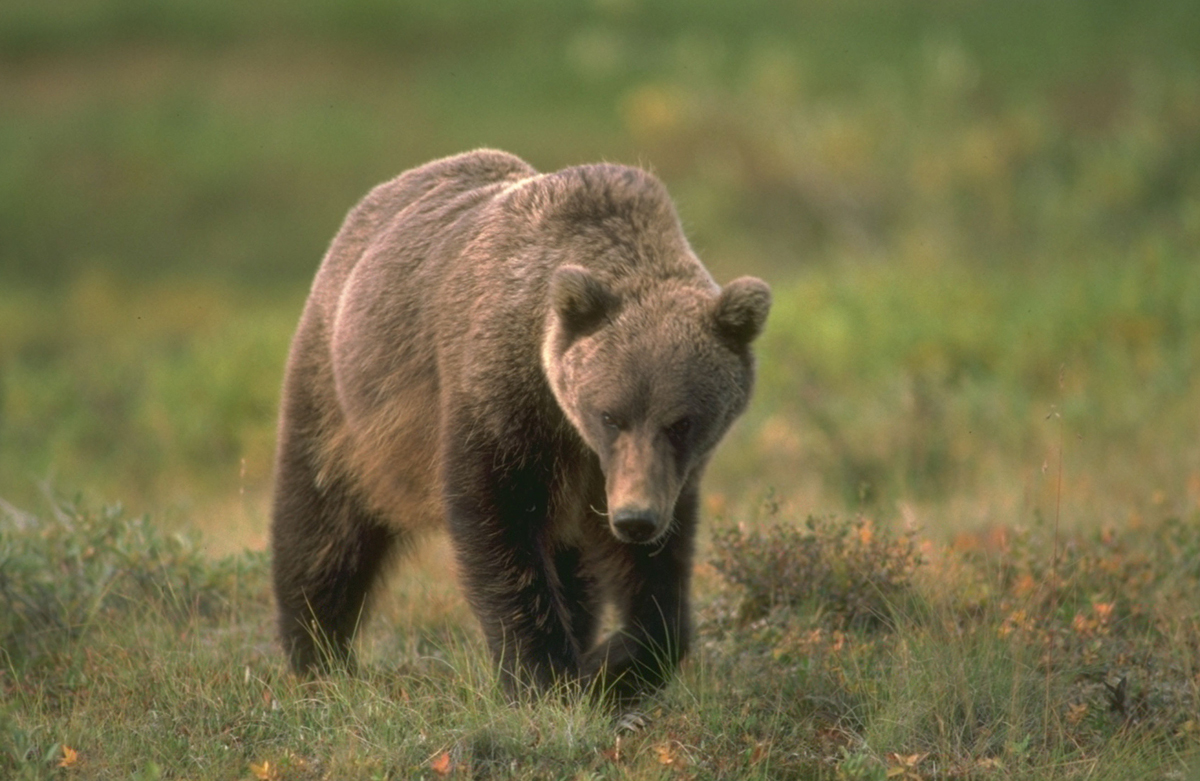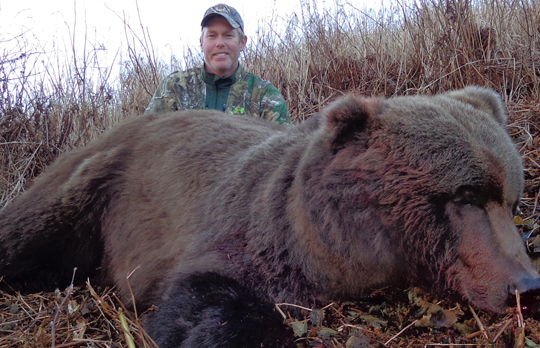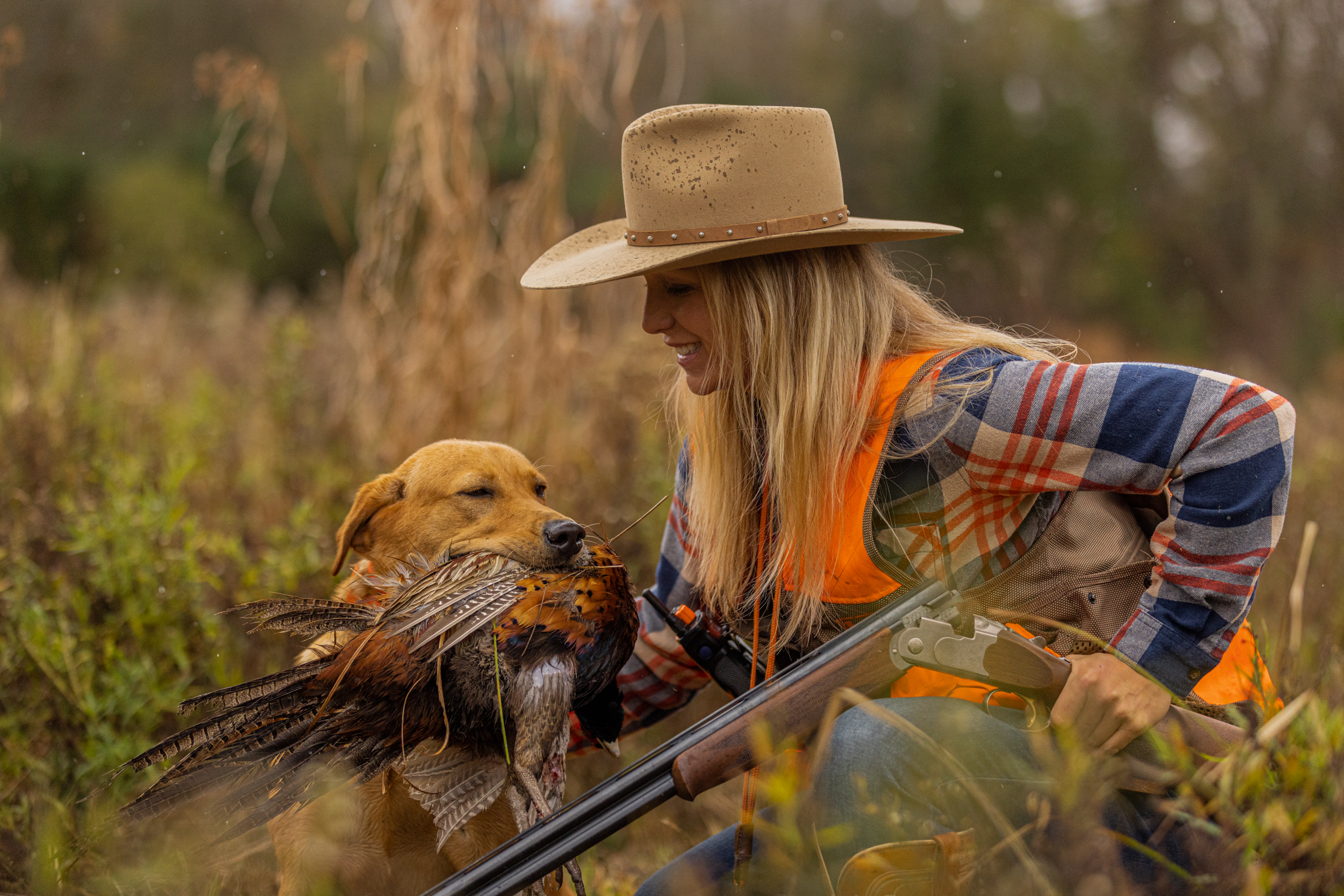 Ursus arctos middendorffi
Ursus arctos middendorffi
Oso pardo de Alaska, Oso chocolate (Sp), Kodiakbär (G), Ours brun (F). Sometimes called Kodiak bear, which is misleading, because Kodiak Island is only a small part of its range.
DESCRIPTION (male) Head and body length 7-9 feet (2.1 to 2.7 m), sometimes more. Tail length 4-5 inches (10.2 to 12.7 cm). Shoulder height 4 to 4-1/2 feet (1.2 to 1.4 cm). Weight 800-1,000 pounds (360-450 kg), sometimes much more. Females are considerably smaller. Chromosome count is 74.
With the possible exception of the polar bear, the Alaska brown bear is the largest land-dwelling carnivore in the world. It is considerably larger than its close relative the grizzly or than the brown bears of Europe and Asia. Its great size is the result of an abundant and protein-rich salmon diet and the relatively mild climate in which it lives. It has a prominent hump on its shoulders, a concave facial profile and short, stout legs ending in large paws. Its long, thick coat is usually brown in color, although individuals vary from blond to almost black.
 BEHAVIOR Unsociable and usually solitary except when mating or when forced by circumstances to share a salmon fishery with other bears. With no enemies other than humans, it is active at all hours. Breeding takes place during May and June. The female mates every second or third year, producing a litter of cubs (1-4, but usually two), which are born in the den in January or February. She is an excellent mother, the cubs remaining with her at least two years, and often three or four. An Alaska brown bear is full grown at 10-11 years and has a life expectancy, barring accidents, of 25-30 years. Individuals have lived more than 36 years in captivity.
BEHAVIOR Unsociable and usually solitary except when mating or when forced by circumstances to share a salmon fishery with other bears. With no enemies other than humans, it is active at all hours. Breeding takes place during May and June. The female mates every second or third year, producing a litter of cubs (1-4, but usually two), which are born in the den in January or February. She is an excellent mother, the cubs remaining with her at least two years, and often three or four. An Alaska brown bear is full grown at 10-11 years and has a life expectancy, barring accidents, of 25-30 years. Individuals have lived more than 36 years in captivity.
Omnivorous, it eats grasses, sedges, roots, bulbs, berries, rodents, salmon and also carrion. Eyesight is only fair, but hearing and sense of smell are very acute. Usual pace is a slow walk, but capable of running fast. Unable to jump. An excellent swimmer. Cubs can climb trees, but adults, with their long foreclaws and heavy bodies, cannot. Normally silent, but can growl, grunt, roar, sniff and cough. Extremely strong and highly alert. Usually cautious and unaggressive toward man, but there are exceptions. Retires to its den during the cold of winter and sleeps for months. A sleeping bear can come to life with little provocation. A bear will often leave its den in late winter to briefly wander outside.
HABITAT Restricted to a narrow strip of the Alaskan coast, plus adjacent islands, within reach of spawning salmon runs. At home anywhere within this area, from saltwater beaches through swamps and forests to rocky mountainsides above the tree line.
DISTRIBUTION Coastal Alaska from the Yukon River delta southward and eastward to the British Columbia border, plus the offshore islands-notably Kodiak, Afognak, Montague, Baranof, Chicagof and Admiralty.
For record-keeping purposes, we classify all brown bears taken in Alaska Game Management Units 1-10 and 14-18 as Alaska brown bears. These units encompass the area from the saltwater coast to the first ridge of inland mountains. All other brown bears from Alaska are considered grizzly bears. This boundary effectively separates the larger, salmon-eating, short-hibernating coastal bears from the smaller interior bears.
 REMARKS One of the top trophies of the North American continent, the Alaska brown bear is hunted on foot under trying conditions. Wearing hipboots and rain gear and carrying a heavy rifle, the hunter must wade rivers and negotiate muskeg swamps, tag alder thickets, steep mountainsides and soft snow. Should he find a good bear after long hours of glassing and waiting, he must get within range quickly because bears seldom remain in one place for long. He must shoot well, for a wounded brown bear is a very serious matter. He should be prepared to spend as many as half his allotted hunting days confined to his tent (or cabin, if he is lucky) in weather too foul to hunt in. He can count on being wet, cold, and bone-tired much of the time. And he should use enough gun, for an Alaska brown bear is very large and very tough.
REMARKS One of the top trophies of the North American continent, the Alaska brown bear is hunted on foot under trying conditions. Wearing hipboots and rain gear and carrying a heavy rifle, the hunter must wade rivers and negotiate muskeg swamps, tag alder thickets, steep mountainsides and soft snow. Should he find a good bear after long hours of glassing and waiting, he must get within range quickly because bears seldom remain in one place for long. He must shoot well, for a wounded brown bear is a very serious matter. He should be prepared to spend as many as half his allotted hunting days confined to his tent (or cabin, if he is lucky) in weather too foul to hunt in. He can count on being wet, cold, and bone-tired much of the time. And he should use enough gun, for an Alaska brown bear is very large and very tough.
TAXONOMIC NOTES The classification of brown bears in North America badly needs updating. The most recent lists 26 species and/or subspecies within the SCI boundaries for Alaska brown bear, which is far too many. All are combined here, with middendorffi Merriam, 1896 having priority.



